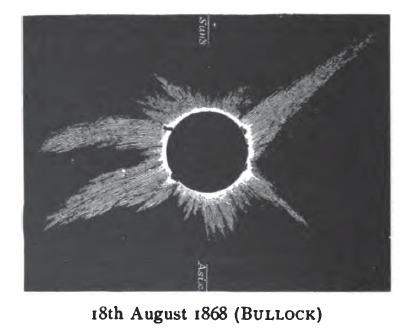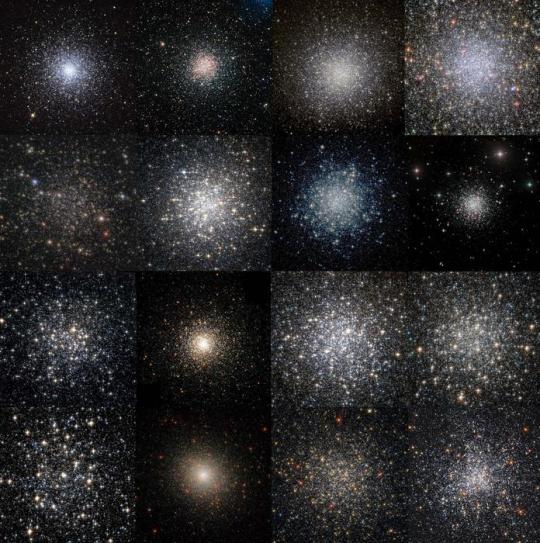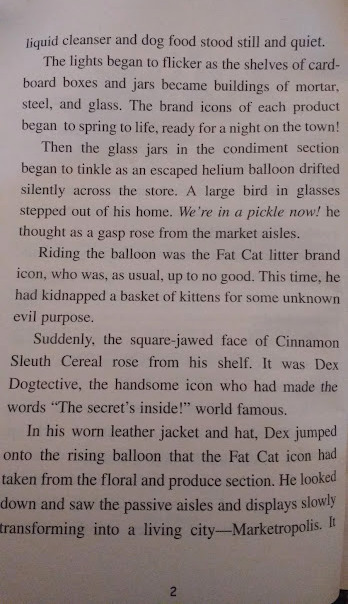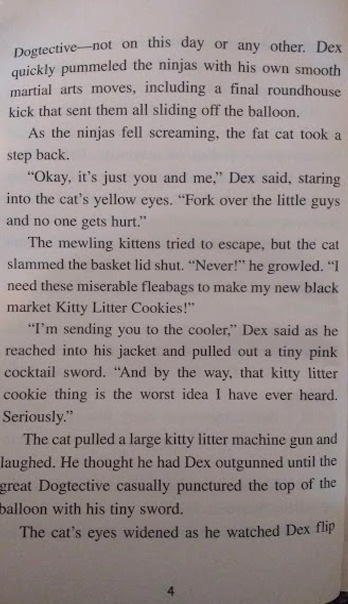#helium analysis
Explore tagged Tumblr posts
Text
ILYSFM ALBUM MELODY ANALYSIS!
SHOW PONY
Similar: Creatures In Heaven, Helium, It’s All So Incredibly Loud
Mood: wistful, healed hurt, reminiscent, piteous
WHATTHEHELLISHAPPENING?
Similar: I Don’t Wanna Talk (I Just Wanna Dance)
Mood: satisfaction, bitter joy, relief, overwhelmingly exhausting contentment, careful carelessness
CREATURES IN HEAVEN
Similar: Helium, Agnes
Mood: cumbersome love, finality, unclouded closure, acceptance of regret, nostalgia, state of missing
WONDERFUL NOTHING
Similar: Mama’s Gun, Flip, Toes, Space Ghost Coast To Coast
Mood: lusty vengeance, satisfying hate, moth-to-a-flame mindset, anger-less despise
A TEAR IN SPACE (AIRLOCK)
Similar: Mama’s Gun, Domestic Bliss
Mood: obsession, depressive love, desperation, mercurial passion, capricious feelings
I CAN’T MAKE YOU FALL IN LOVE AGAIN
Similar: It’s All So Incredibly Loud, Helium, Melon and The Coconut
Mood: deep-seated miss, nostalgia, hopelessness, wishing, broken-hearted, knowingly contradictory desires
HOW I LEARNED TO LOVE THE BOMB
Similar: Heat Waves, A Tear In Space, Youth
Mood: unintentionally intentional distancing, passive frustration, dissuasion
WHITE ROSES
Similar: Space Ghost Coast To Coast, Poplar Street (lyric-wise), I Don’t Wanna Talk (I Just Wanna Talk), Show Pony
Mood: dark path towards light at the end of the tunnel, de-villainization, dying desire, lonesomeness, selfless reminiscing
ON THE RUN
Similar: Waterfalls Coming Out Your Mouth, Tangerine
Mood: light humor, self-scapegoating, decided closure, hopefulness, yearning, blind belief, self-loss
LOST IN THE OCEAN
Similar: Mama’s Gun, Hazey, Dreamland, Hot Sugar
Mood: exhaustion, passiveness, relaxation, carelessness, agape (Greek love type)
OVERALL ALBUM MOOD:
Oxymoronic, loving, grieving, preciousness
#glass animals#glass beasts#glass animals songs#ga#dave bayley#how to be a human being#htbahb#dreamland#ilysfm#creatures in heaven#I love you so fucking much#helium glass animals#iasil ga#heat waves glass animals#glass animals heat waves#dreamland glass animals#agnes glass animals#zaba glass animals#hw ga#music#new music#new album#album#album analysis#album ranking#album review
44 notes
·
View notes
Text
Elden Ring Elemental Allegory Hypothesis
So there's a question that has been on my mind for a while: does this Buckler shield look like a Helium atom?


There is an episode of Stargate SG-1 called "The Torment of Tantalus". A researcher named Ernest Littlefield has been stranded alone on a alien planet for over 50 years since 1945. The planet was called Heliopolis and was at one point the centre of power for Ra - a parasitic snake-like alien that lived inside a human host and presented himself as a god to the people of Earth. But long before this the planet was once the meeting place of 4 alien groups who communicated using the universal language - atoms.
I think it possible that one of the more subtle layers of Elden Ring is in using references to the periodic table of the elements to fill in some gaps in knowledge.
Summation of Sets - counting Rivets and Gemstones
For reasons that will become apparent later, the Buckler Shield is actually not the best example to start with because it is too generic and represents a few too many possibilities. Two better examples would be the Riveted Shield and Moon of Nokstella as both examples could be construed as referencing the moon (Selene):


Riveted Wooden Shield: Outer ring: 12 electrons - magnesium (Mg) Inner detail: 22 electrons - titanium (Ti) Combined: 34 electrons - selenium (Se)
Moon of Nokstella: Ring of small gems: 34 electrons - selenium (Se) Gems in settings: 4 electrons - beryllium (Be) Combined: 38 electrons - strontium (Sr)
I had an entire other post breaking down the elements of the Moon of Nokstella. But here I will run through the Riveted Wooden Shield.
The Riveted Wooden Shield is starting equipment for the Warrior class and the image upon it is of a sword and tree. The most likely reading of this is that the "tree" is represented as a conifer above ground and it's root system below ground, and the sword bisects these horizontally. The odd curvature of lines above and below the sword tip suggests also that the sword pierces a round object - perhaps an eye or full moon. The aesthetic of the Warrior implies a connection with the Blind Swordsman who long ago sealed the God of Rot, and indeed the head piece of this set covers and blinds the right eye (from the vantage of someone looking at the character). The right eye is associated with the eye of Horus and the moon in contrast to the left eye being the eye of Ra and the sun.



Magnesium, Titanium, and Selenium are all elements with connection to Greece. Selenium is named for Selene, the Ancient Greek word for the moon. Being the synthesis of inner and outer rivets this indicates the end product of the Blue Dancer/Blind Swordsman's actions - creation of a moon. As discussed further with the Moon of Nokstella, I believe this to be creation of the black moon or dark moon as selenium is a dark silvery metal.
Titanium is named similarly for the Greek Titans. The Titans were the pre-Olympian gods such as Gaia (earth), her son and husband Uranus (sky), their 6 male children, and 6 female children. The most well know titan is Cronus, the leader of the Titans who castrated and overthrew his father Uranus to become the god associated with the sky and the planet Saturn. The eldest of the Olympians are offspring of Cronus and Rhea: Hestia (Vesta - Virgin goddess of the hearth), Demeter (Ceres/Isis), Hera (Juno), Poseidon (Neptune), and Zeus (Jupiter). Some other Titans of note are the titan Hyperion and titaness Theia whose offspring were Helios (sun), Selene (moon) and Eos (dawn). And also Iapetus, father of the Titans Atlas (who holds up the celestial spheres (stars) on his shoulders) and Prometheus (who brought fire to man).
The name of elemental magnesium "comes from Magnesia, a district of Thessaly (Greece) where the mineral magnesia alba was first found". The word "magnet" has a similar origin as natural lodestones were also found in Magnesia. In the 1st or 2nd century BC there was an astronomer and thaumaturge named Aglaonice of Thessaly who was best known as a sorceress able to 'make the moon disappear from the sky'. It is the speculation of modern astronomers that this means that she could predict the general timeframe when a lunar eclipse would occur.

"Plutarch wrote that she was "thoroughly acquainted with the periods of the full moon when it is subject to eclipse, and, knowing beforehand the time when the moon was due to be overtaken by the earth's shadow, imposed upon the women, and made them all believe that she was drawing down the moon." Peter Bicknell notes that in most lunar eclipses the Moon does not disappear completely, but simply takes on a reddish hue. The ancient sources which discuss Aglaonice do not describe such a change of colour and there is no suggestion that she failed to convince observers that she was able to draw down the Moon. Bicknell speculates that in the first and second centuries BC there was a period in which the Moon appeared significantly less bright during the lunar eclipse due to variations in solar activity, and this might explain this apparent inconsistency." - Wikipedia article on Aglaonice
Overall, the point is that the shield can be read as indicating a time when the old Titans were supplanted by their offspring and thrown under the earth. This coincided with the old concept of the moon being replaced with a new one, which may be characterized as a lunar eclipse. Note that the landscape of the Lands Between is built upon the bodies of giants, and those giants are of a size to operate the Giant's Forge. And in agreement with the ancient mythic nature of this reading the Warrior is the oldest of all Tarnished - as the selection screen indicates "they were all warriors once".
Speculation on the Buckler Shield
Helium (He) would actually tie in quite nicely with the themes of Elden Ring. Its name is derived from "Helios" the Greek god of the sun, as the element was first observed via 7-prism electromagnetic spectroscopy instruments aimed at the sun. The first recorded observation of helium occurred during an eclipse on 18 August 1868 (also called "The King of Siam's Eclipse") by French astronomer Pierre Jules César Janssen. But it was not identified as a new element until a second astronomer - Norman Lokyer - observed the same spectral reading from England in October 1868 and confirmed the discovery with the help of chemist Edward Frankland.

Helium is the only element to have been first discovered in outer space before being found on earth and is very abundant in both the sun and the planet Jupiter in our solar system. It was later found on earth and isolated by chemist William Ramsay in 1895. Ramsay was also known for discovering Neon, Argon, Krypton and Xenon, and for isolating and characterizing Radon in 1910. Helium has many industrial applications such as the cooling of superconducting magnets, arc welding, growing crystals for silicon wafers and as a safer gas for lifting airships than the flammable hydrogen gas. It is generated through alpha particle decay of radioactive elements.
Buckler
A small metal roundshield. The bump in the center enables parrying techniques. A well-timed parry can break an enemy's stance, allowing a critical hit. Best suited for those prepared to take the risk to reap their reward.
The Buckler is starting equipment for the bandit class, or sold by Gatekeeper Gostoc. And based on this available information there is nothing that immediately stands out as relating to the shield being connected to helium. Although helium does have a fairly stable nucleus relative to its neighbours hydrogen and lithium, it is not what it is known for, and it is certainly not a metal. The description of the bump in the centre enabling parrying brings to mind the way that the nuclei of atoms will prefer to repel each other, thus performing nuclear fusion requires particles to be accelerated towards each other at very high speeds. Californium and Berkelium have been produced by bombarding Curium with alpha particles, Mendelevium is produced by bombarding Einsteinium with alpha particles.
There is a secondary explanation that fits - which is actually the first one that I had thought of. There is a theme in Elden Ring of shells. Turtles have shells that are symbolic of protecting secrets, snakes have shells (which don't match their species), the sorcerers have trays of shells sitting in their rises. One of the successful models of the atom is to arrange the electrons in shells, where the valence electrons in the outermost shell are available for bonding. It was coincidentally Edward Frankland again who introduced the concept of valence in the same year as the discovery of helium.


The Buckler is made of an unspecified metal, and as it happens there are many elements which are found with 2 valence electrons in their outer shell. These include Zinc (Zn), Iron (Fe), Nickel (Ni), Cobalt (Co), Yttrium (Y), Vanadium (V), Scandium (Sc), Technetium (Tc), Cadmium (Cd), Lutetium (Lu), Hafnium (Hf), Tantalum (Ta), Tungsten (W), Rhenium (Re), Osmium (Os), Iridium (Ir), Mercury (Hg). As well as the entire alkaline earth metal group of Beryllium (Be), Magnesium (Mg), Calcium (Ca), Strontium (Sr), Barium (Ba), and Radium (Ra). Whittled down the periodic table to a mere 23 or so entries of interest - not bad! And at least 10 of these (in bold) were already thought by me to be elements of interest.
And by the traces of rust on the shield the "metal" in question could be simply iron. Iron has two electrons in the outer shell and is the heaviest element produced by the sun with nuclear fusion. Iron represents a transition point - for lighter elements energy is produced by nuclear fusion and for heavier elements energy is produced by nuclear fission. Although the Earth's core is largely composed of iron, most available elemental iron in the earth's crust originated from meteorites.

This post is just an introduction to the kinds of things that I'm thinking about, really. Assuming the convention that rivets represent electrons there are so many other shields to sift through and cross reference with the other known information to confirm a real pattern. Other possible elemental references I have noticed: the variety of flame colours found in game being reminiscent of the colours produced in burning metals for flame tests; characters whose names or story themes represent mythological figures who have elements named for them; characters whose names contain a syllable that is a standard abbreviation for an element; and known types of metals incorporated in descriptions and visuals like gold, silver, copper, bronze, brass, iron, steel, etc.
And also, the buckler shield may be present in Elden Ring but it originated at least as early as Dark Souls. So that begs the question of how long ago could FromSoft have started playing with elemental metaphor go that uses the true atomic elements of the periodic table as inspiration lurking beneath an alchemical framing device.
#elden ring#media analysis#I was working on another post about the elemental allegory but it got to some depressing places in real world history#Also absolutely wild pull that the man who first observed Helium was named for Julius Caesar considering the other Caesar references#Radon is very interesting too - I forgot about the brachytherapy application#and regarding Stargate SG-1 it was also on my mind that the “Ori” is a faction of false gods themed around Christianity (i.e. Oridys Rise)
2 notes
·
View notes
Text
MIT researchers discover the universe’s oldest stars in our own galactic backyard
New Post has been published on https://thedigitalinsider.com/mit-researchers-discover-the-universes-oldest-stars-in-our-own-galactic-backyard/
MIT researchers discover the universe’s oldest stars in our own galactic backyard


MIT researchers, including several undergraduate students, have discovered three of the oldest stars in the universe, and they happen to live in our own galactic neighborhood.
The team spotted the stars in the Milky Way’s “halo” — the cloud of stars that envelopes the entire main galactic disk. Based on the team’s analysis, the three stars formed between 12 and 13 billion years ago, the time when the very first galaxies were taking shape.
The researchers have coined the stars “SASS,” for Small Accreted Stellar System stars, as they believe each star once belonged to its own small, primitive galaxy that was later absorbed by the larger but still growing Milky Way. Today, the three stars are all that are left of their respective galaxies. They circle the outskirts of the Milky Way, where the team suspects there may be more such ancient stellar survivors.
“These oldest stars should definitely be there, given what we know of galaxy formation,” says MIT professor of physics Anna Frebel. “They are part of our cosmic family tree. And we now have a new way to find them.”
As they uncover similar SASS stars, the researchers hope to use them as analogs of ultrafaint dwarf galaxies, which are thought to be some of the universe’s surviving first galaxies. Such galaxies are still intact today but are too distant and faint for astronomers to study in depth. As SASS stars may have once belonged to similarly primitive dwarf galaxies but are in the Milky Way and as such much closer, they could be an accessible key to understanding the evolution of ultrafaint dwarf galaxies.
“Now we can look for more analogs in the Milky Way, that are much brighter, and study their chemical evolution without having to chase these extremely faint stars,” Frebel says.
She and her colleagues have published their findings today in the Monthly Notices of the Royal Astronomical Society (MNRAS). The study’s co-authors are Mohammad Mardini, at Zarqa University, in Jordan; Hillary Andales ’23; and current MIT undergraduates Ananda Santos and Casey Fienberg.
Stellar frontier
The team’s discoveries grew out of a classroom concept. During the 2022 fall semester, Frebel launched a new course, 8.S30 (Observational Stellar Archaeology), in which students learned techniques for analyzing ancient stars and then applied those tools to stars that had never been studied before, to determine their origins.
“While most of our classes are taught from the ground up, this class immediately put us at the frontier of research in astrophysics,” Andales says.
The students worked from star data collected by Frebel over the years from the 6.5-meter Magellan-Clay telescope at the Las Campanas Observatory. She keeps hard copies of the data in a large binder in her office, which the students combed through to look for stars of interest.
In particular, they were searching ancient stars that formed soon after the Big Bang, which occurred 13.8 billion years ago. At this time, the universe was made mostly of hydrogen and helium and very low abundances of other chemical elements, such as strontium and barium. So, the students looked through Frebel’s binder for stars with spectra, or measurements of starlight, that indicated low abundances of strontium and barium.
Their search narrowed in on three stars that were originally observed by the Magellan telescope between 2013 and 2014. Astronomers never followed up on these particular stars to interpret their spectra and deduce their origins. They were, then, perfect candidates for the students in Frebel’s class.
The students learned how to characterize a star in order to prepare for the analysis of the spectra for each of the three stars. They were able to determine the chemical composition of each one with various stellar models. The intensity of a particular feature in the stellar spectrum, corresponding to a specific wavelength of light, corresponds to a particular abundance of a specific element.
After finalizing their analysis, the students were able to confidently conclude that the three stars did hold very low abundances of strontium, barium, and other elements such as iron, compared to their reference star — our own sun. In fact, one star contained less than 1/10,000 the amount of iron to helium compared to the sun today.
“It took a lot of hours staring at a computer, and a lot of debugging, frantically texting and emailing each other to figure this out,” Santos recalls. “It was a big learning curve, and a special experience.”
“On the run”
The stars’ low chemical abundance did hint that they originally formed 12 to 13 billion years ago. In fact, their low chemical signatures were similar to what astronomers had previously measured for some ancient, ultrafaint dwarf galaxies. Did the team’s stars originate in similar galaxies? And how did they come to be in the Milky Way?
On a hunch, the scientists checked out the stars’ orbital patterns and how they move across the sky. The three stars are in different locations throughout the Milky Way’s halo and are estimated to be about 30,000 light years from Earth. (For reference, the disk of the Milky Way spans 100,000 light years across.)
As they retraced each star’s motion about the galactic center using observations from the Gaia astrometric satellite, the team noticed a curious thing: Relative to most of the stars in the main disk, which move like cars on a racetrack, all three stars seemed to be going the wrong way. In astronomy, this is known as “retrograde motion” and is a tipoff that an object was once “accreted,” or drawn in from elsewhere.
“The only way you can have stars going the wrong way from the rest of the gang is if you threw them in the wrong way,” Frebel says.
The fact that these three stars were orbiting in completely different ways from the rest of the galactic disk and even the halo, combined with the fact that they held low chemical abundances, made a strong case that the stars were indeed ancient and once belonged to older, smaller dwarf galaxies that fell into the Milky Way at random angles and continued their stubborn trajectories billions of years later.
Frebel, curious as to whether retrograde motion was a feature of other ancient stars in the halo that astronomers previously analyzed, looked through the scientific literature and found 65 other stars, also with low strontium and barium abundances, that appeared to also be going against the galactic flow.
“Interestingly they’re all quite fast — hundreds of kilometers per second, going the wrong way,” Frebel says. “They’re on the run! We don’t know why that’s the case, but it was the piece to the puzzle that we needed, and that I didn’t quite anticipate when we started.”
The team is eager to search out other ancient SASS stars, and they now have a relatively simple recipe to do so: First, look for stars with low chemical abundances, and then track their orbital patterns for signs of retrograde motion. Of the more than 400 billion stars in the Milky Way, they anticipate that the method will turn up a small but significant number of the universe’s oldest stars.
Frebel plans to relaunch the class this fall, and looks back at that first course, and the three students who took their results through to publication, with admiration and gratitude.
“It’s been awesome to work with three women undergrads. That’s a first for me,” she says. “It’s really an example of the MIT way. We do. And whoever says, ‘I want to participate,’ they can do that, and good things happen.”
This research was supported, in part, by the National Science Foundation.
#000#2022#Analysis#archaeology#Astronomy#Astrophysics#big bang#billion#Cars#chemical#chemical elements#chemistry#classes#Cloud#Composition#computer#course#data#Discoveries#dwarf#dwarf galaxies#earth#Evolution#Foundation#Gaia#galaxies#Galaxy#galaxy formation#helium#how
3 notes
·
View notes
Text
Routine chemical analyses involve determination of the mass percentages of C, H, N and S in a compound, and are often carried out using an automated elemental analyser such as the one shown in the schematic diagram in figure 3.8.

"Chemistry" 2e - Blackman, A., Bottle, S., Schmid, S., Mocerino, M., Wille, U.
#book quotes#chemistry#nonfiction#textbook#analysis#chemical analysis#schematic#combustion#chromatography#thermal conductivity#chromatogram#carbon#carbon dioxide#hydrogen#nitrogen#water#sulfur#sulfur dioxide#oxygen#helium#oxidation#reduction#redox
4 notes
·
View notes
Text
Exploring the Helium Industry: Trends, Challenges, and Future Prospects
Introduction
The helium industry plays a crucial role in various sectors, from healthcare to aerospace, thanks to its unique properties. As an essential non-renewable resource, helium is critical for applications such as MRI machines, rocket propulsion, and even party balloons. In recent years, the helium market has experienced significant shifts due to supply chain disruptions, increased demand, and evolving technologies. This blog explores the current landscape of the helium industry, key trends, challenges, and future prospects.
Current Market Overview
Market Size and Growth
The helium market is projected to reach a size of 184.59 million cubic meters in 2024 and is expected to grow to 214.21 million cubic meters by 2029. This represents a compound annual growth rate (CAGR) of 3.02% during the forecast period from 2024 to 2029.
The global helium market has been growing steadily, with a valuation expected to reach several billion dollars in the coming years. Factors contributing to this growth include the increasing demand for helium in the healthcare sector, particularly for MRI machines, as well as its use in advanced technologies like fiber optics and semiconductors.
Major Players
The helium market is dominated by a few key players, including Air Products and Chemicals, Inc., Linde plc, and Praxair Technology, Inc. These companies not only produce helium but also offer various related services, including purification and distribution, making them integral to the market’s dynamics.
Key Trends in the Helium Industry
Rising Demand in Healthcare: The demand for helium in medical imaging is a primary driver. As healthcare technology advances, the need for helium-based applications is expected to increase, particularly in emerging markets where healthcare infrastructure is expanding.
Technological Advancements: Innovations in extraction and purification technologies are making it easier and more cost-effective to produce helium. Companies are investing in research to develop more efficient methods of helium recovery from natural gas.
Sustainability and Recycling: With increasing awareness of environmental issues, the industry is focusing on sustainable practices. Helium recycling technologies are being developed to reduce waste and improve the supply chain’s sustainability.
Geopolitical Factors: The helium supply chain is highly sensitive to geopolitical issues. For instance, disruptions in major helium-producing countries can lead to supply shortages and price volatility, affecting industries that rely heavily on this resource.
Challenges Facing the Helium Market
Supply Shortages: Helium is a non-renewable resource, and its production is often linked to natural gas extraction. With increasing demand and declining production from traditional sources, the industry faces significant supply challenges.
Price Volatility: The helium market is prone to price fluctuations due to supply shortages, geopolitical tensions, and changes in demand. This volatility can affect industries that depend on stable pricing for budgeting and planning.
Environmental Concerns: The extraction and use of helium, particularly in natural gas fields, raise environmental issues. Companies are under pressure to implement more sustainable practices to minimize their ecological footprint.
Future Prospects
The helium market is poised for growth, driven by advancements in technology, increased demand in healthcare, and potential new sources of helium extraction. Investment in research and development will be crucial in addressing supply challenges and finding sustainable solutions.
Conclusion
The helium industry stands at a crossroads, facing both challenges and opportunities. As demand continues to rise across various sectors, stakeholders must adapt to the changing landscape. By embracing innovation and sustainable practices, the helium market can ensure its long-term viability and contribute to technological advancements across industries. For a detailed overview and more insights, you can refer to the full market research report by Mordor Intelligence: https://www.mordorintelligence.com/industry-reports/helium-market
#Helium Industry#Helium Market#Helium Market Size#Helium Market Share#Helium Market Analysis#Helium Market Report
0 notes
Text
The global helium market is expected Growth owing to Rising Demand from Various End Use Industries

Helium finds wide applications in cryogenics, leak detection, welding, pressurizing, and lifting among other industrial processes. Its properties such as inert chemical nature and low boiling point enable it to perform critical functions across various end use verticals. Growing MRI scanning procedures and rising semiconductor manufacturing activities have significantly boosted the demand for helium over the years.
The global helium market is estimated to be valued at US$ 8.13 Mn in 2024 and is expected to exhibit a CAGR of 6.3% over the forecast period from 2024 to 2031. Key Takeaways Key players operating in the gaseous and liquid helium market are ThermoFisher Scientific Inc., OSI Systems Inc., Chemring Group PLC, Bruker Corporation, Viken Detection, FLIR Systems Inc., Astrophysics Inc., Aventura Technologies Inc., Teknicom Solutions Ltd., L3 Security and Detection Systems Inc., Nuctech Company Limited, and Smiths Detection Inc. These players are focusing on capacity expansion and new product development strategies to strengthen their market position. The Gaseous and Liquid Helium Market Demand offers lucrative growth opportunities such as increasing demand for helium from the healthcare sector. Helium finds wide usage in MRI scans owing to its non-reactive nature and ability to conduct magnetic fields. Rising prevalence of chronic diseases and growing geriatric population are driving the demand for advanced medical imaging procedures worldwide. This is expected to propel the consumption of helium in the healthcare vertical over the coming years. Key players are also focused on expanding their footprint in high growth regions. For instance, several manufacturers have increased their production capacities in Asia Pacific and Middle East & Africa. Ease of raw material availability and lower production costs are encouraging companies to set up manufacturing facilities in these regions. Additionally, growing industrialization and infrastructure development activities in developing nations will further accelerate the demand for helium in the forthcoming years. Market drivers:
The primary driver which is propelling the growth of gaseous and liquid helium market is the rising demand from healthcare sector. Helium is widely used in MRI scans which are seeing increasing adoption rates owing to rising cases of chronic diseases. Market restraints:
One of the major challenges faced by the gaseous and liquid helium market is the volatile supply and pricing of helium. As helium is a non-renewable resource, fluctuations in its production and supply have led to unpredictable price trends over the past years which hinders the market growth.
Segment Analysis The gaseous and liquid helium market is dominated by the medical sector sub segment. This is because helium gas is used as a carrier and shielding gas in MRI machines. It allows for effective transfer of magnetic fields through the human body without any safety issues. Helium is also used for lung function testing and as a pressurizing agent in life jackets. The welding sector is another fast growing sub segment as helium gas allows for inert atmosphere arc welding of certain materials. It prevents oxidation of hot metal surfaces which is crucial for achieving high quality welds in applications such as aerospace. Global Analysis Content: The North American region currently dominates the global gaseous and liquid helium market with the United States being the largest consumer. This is attributed to high demand from medical device manufacturing and materials processing industries in the region. The Asia Pacific region is projected to be the fastest growing market during the forecast period. This is due to rising medical infrastructure and increasing popularity of cryogenics applications in countries like China and India. Countries in Europe such as Germany also have a sizeable market share due to major welding and scientific research activities carried out in the bloc.
Gets More Insights on, Gaseous and Liquid Helium Market
About Author:
Priya Pandey is a dynamic and passionate editor with over three years of expertise in content editing and proofreading. Holding a bachelor's degree in biotechnology, Priya has a knack for making the content engaging. Her diverse portfolio includes editing documents across different industries, including food and beverages, information and technology, healthcare, chemical and materials, etc. Priya's meticulous attention to detail and commitment to excellence make her an invaluable asset in the world of content creation and refinement.
(LinkedIn- https://www.linkedin.com/in/priya-pandey-8417a8173/)
#Gaseous and Liquid Helium Market Size#Gaseous and Liquid Helium Market Share#Gaseous and Liquid Helium Market Analysis#Gaseous and Liquid Helium#Coherent Market Insights#Gaseous and Liquid Helium Market
0 notes
Text

The first 3D view of the formation and evolution of globular clusters
A study published today in Astronomy & Astrophysics marks a significant milestone in our understanding of the formation and dynamical evolution of multiple stellar populations in globular clusters (spherical and very compact stellar agglomerates typically populated by 1–2 million stars). This pioneering study, conducted by a group of researchers from the National Institute for Astrophysics (INAF), the University of Bologna, and Indiana University, is the first to perform a 3D kinematic analysis of multiple stellar populations for a representative sample of 16 globular clusters in our Galaxy. It provides a groundbreaking observational description of their kinematic properties (i.e., how stars move within globular clusters) and their long-term evolution from the formation to the present day.
Emanuele Dalessandro, researcher at INAF in Bologna, lead author of the article and coordinator of the working group, explains: "Understanding the physical processes behind the formation and early evolution of globular clusters is one of the most fascinating and debated astrophysical questions of the past 20–25 years. The results of our study provide the first solid evidence that globular clusters formed through multiple star formation events and place fundamental constraints on the dynamical path followed by the clusters throughout their evolution. These results were made possible by a multi-diagnostic approach and the combination of state-of-the-art observations and dynamic simulations."
The study highlights that the kinematic differences between multiple populations are key to understanding the formation and evolution mechanisms of these ancient structures.
With ages that can reach 12-13 billion years (thus dating back to the dawn of the cosmos), globular clusters are among the first systems to form in the Universe. They represent a typical population of all galaxies. They are compact systems (with masses of several hundred thousand solar masses and sizes of a few parsecs), and they can be observed even in distant galaxies.
"Their astrophysical significance is huge," says Dalessandro, "because they not only help us to test cosmological models of the formation of the Universe due to their age but also provide natural laboratories for studying the formation, evolution, and chemical enrichment of galaxies." Despite globular clusters have been studied for over a century, recent observational results show that our knowledge is still largely incomplete.
"Results obtained in the last two decades have unexpectedly shown that globular clusters consist of more than one stellar population: a primordial one, with chemical properties similar to other stars in the Galaxy, and another with anomalous chemical abundances of light elements such as helium, oxygen, sodium, and nitrogen," says Mario Cadelano, researcher at the Department of Physics and Astronomy at the University of Bologna and INAF associate, one of the authors of the study. "Despite the large number of observations and theoretical models aimed at characterising these populations, the mechanisms regulating their formation are still not understood."
The study is based on the measurement of 3D velocities, i.e., the combination of proper motions and radial velocities, obtained with the ESA Gaia telescope and with data from, among others, the ESO VLT telescope, primarily as part of the MIKiS survey (Multi Instrument Kinematic Survey), a spectroscopic survey specifically aimed at exploring the internal kinematics of globular clusters. The use of these telescopes, from space and the ground, has provided an unprecedented 3D view of the velocity distribution of stars in the selected globular clusters.
The analysis reveals that stars with different abundances of light elements are characterised by different kinematic properties, such as rotational velocities and orbital distributions.
"In this work, we analysed in detail the motion of thousands of stars within each cluster," adds Alessandro Della Croce, a PhD student at INAF in Bologna. "It quickly became clear that stars belonging to different populations have distinct kinematic properties: stars with anomalous chemical composition tend to rotate faster than the others within the cluster and progressively spread from the central regions to the outer ones."
The intensity of these kinematic differences depends on the dynamical age of globular clusters. "These results are consistent with the long-term dynamical evolution of stellar systems, in which stars with anomalous chemical abundances form more centrally concentrated and rotate more rapidly than the standard ones. This, in turn, suggests that globular clusters formed through multiple star formation episodes and provides an important piece of information in defining the physical processes and timescales underlying the formation and evolution of massive stellar clusters," Dalessandro emphasises.
This new 3D view of the motion of stars within globular clusters provides an unprecedented and fascinating framework for the formation and dynamical evolution of these intriguing systems. It also helps to clarify some of the most complex mysteries surrounding the origin of these ancient structures.
IMAGE: Image gallery of the 16 globular clusters analysed in order of difference in the kinematic properties observed between the multiple stellar populations. Credit Credits: ESA/Hubble - ESO - SDSS
11 notes
·
View notes
Note
could I see a Ruby, Penny, and Oscar prompt based on this?

(Okay, since this looks kinda funny)
Weiss: "Penny!? Ruby!? HOW DID THIS HAPPEN?!"
Ruby: "Remember that gum we got from Walker Wunku?"
Yang: "The weird candy maker?"
Penny: "Upon further analysis, and what our current predicament: This confectionary contains an edible element similar to helium."
Jaune: *confused* "Meaning...?"
Pyrrha: "They ate experimental helium gum."
#answer#answered#answer post#image#image post#image prompt#rwby#rwby au#rwby shitpost#rwby vol 7#rwby vol 8#ruby rose#weiss schnee#yang xiao long#jaune arc#pyrrha nikos#penny polendina
24 notes
·
View notes
Text
MISSION 1: Scare the Fat Italain vs Wear a Disguise

Ok, so we have already a options! No training and all, ok lets see... So the first mission is "Mario's guarding the front! How do we get in the casino?" Well then, time to analysis:
Option 1: Scare the Fat Italian
So... where do we start here, Mario is pretty easily coward, so yea, we could scare him. HOWEVER! This is SMG4 we're talking about, meaning that this option could be also have chances to backfired in some sense, I mean right now, it seems like Mario is pretty on guard, not to mention, SMG3 and SMG4 would get easily get caught and be chased by guards!! If they have one that is. But, it doesn't mean it isnt a bad choice, as there is also a chances that Mario could get easily get scared and those two could ran instantly inside the casino and go on to the second mission. Overall, this option has 50/50 chances, depends if Mario is taking his job seriously.
Option 2: Wear a Disguise
Now this also make sense, as they can sneak through the casino and don't get caught. The only problem that it is also probably has some catch, like, what if the disguises backfired and everyone knows that SMG4 and SMG3, or if the disguise did succeed, what if someone ran pass by, and cause their disguises to be undone? But yea overall, this option is also has 50/50 chances, but probably has more chances of fail if it got backfired.
Final verdict
Honestly, any of those two of them are a great choices, but if I were to pick... I would say disguise. Yes, it does have some 50/50 chances but high probability of fails if someone recognize 3 and 4, but if I am being honest, scaring Mario is like trying to punch a helium balloon that is about to pop, but then again, it can still work.
#smg4#smg4 wotfi 2023#smg4 wotfi#wotfi 2023#missionpreparation#scare the fat italian#wear a disguise
23 notes
·
View notes
Text
As this film will be getting much more coverage during awards season, I thought that this analysis and reflection of Leonard Bernstein's queer sexuality, and how it was rendered in the film, was worth reading.
Certain emphases in the article below are mine. As an East-Coast American, in many ways, I feel like Leonard Bernstein is musical family; that a Hollywood-driven film about him would leave out important details of the context of his sexual and emotional life is... to be expected in the Hollywood West.
****
The film celebrates Leonard Bernstein’s musical duality, but fails to seriously engage with his bisexuality.
By Jennie Livingston
There’s a heartbreaking scene in Bradley Cooper’s “Maestro,” about the marriage of the composer and conductor Leonard Bernstein (Cooper) to the actress Felicia Montealegre (Carey Mulligan), in which, as the couple argue in the bedroom of their Upper West Side apartment, Macy’s parade inflatables glide past the windows. A giant Snoopy echoes a Snoopy we saw in a family scene; it also gestures at the awkward gulf between Bernstein’s private and public lives, as if the musician himself were yet another helium-propelled icon from the Thanksgiving pantheon. Montealegre’s accusation, “Your truth is a [expletive] lie!” nails Bernstein’s privilege, condemning the habits and appetites he expects his family to tolerate and support.
The film gets right so much of who Bernstein was, allowing us to take in how he was, all at once, ahead of his time, a victim of his time, a gay man, a bisexual, a father, a nonconformist, a narcissist. “Maestro” is full of heart and craft, with riveting lead performances. It’s a film about a musician that doesn’t exaggerate or glorify the creative process, or suggest artists are either superhuman or subhuman.
The film drops you into the heart of creation so that you feel the excitement of the new, particularly in eras (the 1940s through the ’70s) in which Leonard Bernstein revolutionized how the public experienced classical music. As the decades shift, so does what we see: Early scenes use an aspect ratio (4:3) and color world (black and white) from the ’40s; then the film almost imperceptibly brings in color, before finally stretching the frame out to widescreen — all without banging you over the head with its cinematic cleverness. The cinematographer, Matthew Libatique, deserves special applause for his command of light, space and movement. An opening scene in which the young Bernstein leaps onto a bed, slaps his partner’s butt like a timpani, then runs right into Carnegie Hall in his bathrobe and boxers, is as thrilling as any time-compression or dream sequence I can name.
Although it’s clear that Cooper’s directorial hand is nothing less than breathtaking, the film becomes increasingly disquieting. In the first third of the film, the script sets up an intoxicating premise: a queer Jewish man inhabiting the already-antisemitic world of classical music falls in love with a woman. It can happen. It particularly could happen in a world in which gay artists were always in danger of being exposed and ejected from the institutions they depended on. In the ’40s and ’50s, when Bernstein and Montealegre met and married, psychiatry still considered homosexuality a disorder to be treated or cured. (A note on my language describing Bernstein’s sexuality: In an early letter, Montealegre tells Bernstein “you are a homosexual and may never change.” More recently, his daughter Jamie has referred to him alternately as gay and bisexual.)
Early on, the script follows Bernstein from dating the clarinetist David Oppenheim (the man in bed in that opening scene, played by Matt Bomer) to his courtship with Montealegre, an actress with high cheekbones and an intelligence and warmth that are just as sharply defined. One day Lenny’s walking alone in Central Park and runs into Oppenheim, who’s strolling with his wife, Ellen Adler (Kate Eastman), and baby in tow. By now Bernstein’s also married. Addressing the child, Bernstein jokes that he has slept with both of her parents! And adds with a kind of wild glee, “but I’m reining it in.” The mother and child go one way; Bernstein and Oppenheim head downtown. Soon Oppenheim is clasping Bernstein’s face, and they are both feeling, regretting, reliving what couldn’t have been.
If only the film itself weren’t an exercise in “reining in” Bernstein’s sexuality. Granted, the movie primarily concerns the relationship between Montealegre and Bernstein. It’s about two people creating a family, a family that has issues, partly because the wife spends years tolerating, resisting, commenting on, accepting and suffering from her husband’s dualities. But about a third of the way in, the queer characters all but fade out. They’re there as a light visual presence, but not as people with stories and interior lives.
After Oppenheim and Bernstein’s intimate stroll, Lenny and his lovers are reduced (in Montealegre’s eyes) to a series of obstacles to respectability, and (in the audience’s eyes) to a series of outfits, mannerisms and even clichés, like a coke-fueled party during which Bernstein talks on the phone to his daughter Jamie. Did some gay men in the ’70s skate on the surface of drugs and anonymous sex? Yes, and if the film tells me Bernstein was there to witness and experience it, I believe it. What I don’t believe is that he never experienced relationships with men built on conversation, intellectual intimacies and sustained physical contact. It wouldn’t have taken much — one or two scenes — to suggest that the gay relationships that Bernstein cultivated were in fact love affairs. That may have been worth noting, including in the service of telling the story of the marriage.
“Heterosexuals have never known what to do with queer people, if they think of their existence at all,” Carmen Maria Machado writes, in a memoir tracing the invisibility of certain narratives. I don’t want to believe that the director and his co-writer are incapable of writing well-rounded gay characters, but paradoxically, the failure to render Bernstein’s male lovers as three-dimensional people distracts from the central couple’s romance. I longed for more insight into the nuances of Bernstein and Montealegre’s conundrum, and details of his queer life could have provided it. Flattening Bernstein’s gay relationships to a series of knowing glances and brief encounters seemed to underline the main couple’s essential heterosexuality, rather than emphasizing their relationship’s complexity.
Because, in life, Bernstein kept seeing men — and not only at the events the film allows us to briefly glimpse. Ultimately, he left Montealegre for a younger man, Tom Cothran (Gideon Glick), who worked in classical radio. If included, this risky decision could have been a great turning point in the film. Scenes of Bernstein attending the dying Montealegre are moving; they could have been more meaningful if we had understood the drama and sacrifice behind his loving presence at her bedside. He didn’t just drop out of one or two coke-fueled soirees; he left a relationship.
The film ends with Montealegre’s death and suggests Bernstein never recovered from the loss. In life, after his wife’s death, Bernstein reconnected with Cothran, as a friend. Soon after, Cothran himself died, of AIDS, the plague that claimed the lives of so many men of his and Bernstein’s generations. It must have been a cavalcade of griefs for Bernstein; it must have been so complex for this artist to have struggled — with his desire to honor his desires, with his realization that the world was becoming increasingly open to “out” queer artists as viable public figures — and with the divisions between his queer worlds and his family. I wonder if Bernstein longed for Montealegre more acutely in the 1980s. Perhaps, together, they could have absorbed the horror of the AIDS pandemic.
The decision to leave out AIDS feels as if the filmmakers simply don’t know, or mark as significant, what happened in the world during the years between Montealegre’s death in 1978 and Bernstein’s own death in 1990. What viewers get instead is a near-final sequence of Bernstein grinding with his young conducting student to Tears for Fears’s “Shout,” then wildly dancing on his own. That these flashes of ecstasy occur in a room full of other young men, many of whom will die soon, is an odd understatement from a film obsessed with the passage of time.
Jennie Livingston directed and produced the award-winning documentary “Paris Is Burning,” and the shorts “Who’s the Top?” “Through the Ice” and “Hotheads.” Other work includes directing for the TV series “Pose” and creating an original projection for Elton John’s show. Livingston is currently at work on a nonfiction feature film, “Earth Camp One.”
15 notes
·
View notes
Text
Voiceplay Visuals: This Is Halloween
So obviously I'm not the only one who loves talking about Voiceplay and analysing their content, but I wanted to do something a bit different from the kinds of analyses/reactions that other people do, both on here and on Youtube (and music theory isn't really my forte anyway). So I'm planning on making some posts just focusing on the videos (and Geoff's as well, eventually), rather than the music arrangement or vocals or anything like that. My credentials are being a Drama Kid during my high school years, and experience with this sort of analysis from my time in other fandoms. I'm not planning on doing every single video, and though I'm gonna go chronologically from mid-2017 onwards (why not earlier? Because Reasons). However, since I yesterday finished a fanfic based on Voiceplay's cover of This Is Halloween, (which I studied a fair bit to get details right), I might as well start there!

Oogie Boogie pumpkin just outside the front door! (And a Jack Skellington one on the other side I believe?) These pumpkin also shows up in the spooky Halloween realm the group are transported to after eating the candy.
Credit to one of the comments which said that Earl is wearing a cow onesie and Eli is wearing a rooster onesie, which more likely than not is a callback to their (extremely hilarious) Chicken Song performance. (J is wearing a CatDog onesie, I think Geoff is wearing a giraffe onesie? And I'm not sure what Layne's onesie is meant to be)
Again credit to a commenter (different one), pointing out that Eli deadpan elbows Layne in the back, pushing him down after he eats the candy (likely a not-so-subtle acting cue or something like that, but still very funny once you notice it)

The return of the Jack and Oogie Boogie pumpkins, along with some other creatively-designed Jack-O-Lanterns! Peep the one on the far right, a little more towards the back; its 'eyes' say VP, and its mouth is the Voiceplay logo!
Also a little bit of foreshadowing, whether intentional or not: when Layne wakes up, one of the first things in his line of sight is the axe resting on the hay bales...

First of all, how many pumpkins were carved just for this video? Because a lot of effort went into making all those different designs for sure (and no, I'm not part of Voiceplay's Patreon, as the tier that lets you see behind-the-scenes stuff is like $8.50 AUD per month, rip). And second of all, this is a decent shot of how the group starts out upon waking up. J None is wearing a yellow plaid flannel quite similar to The Wolfman in Nightmare Before Christmas, and Earl is wearing denim overalls, like the behemoth character. Eli's outfit is of course representative of the Mayor of Halloweentown, but no spider bowtie or "Mayor" rosette (would've loved to see it, but eh no biggie). Layne I will get to in a moment, and Geoff a little bit after that.

I can't be bothered getting a better picture of it but Eli's half-concerned half-weirded-out face after J's helium-like vocal line is very amusing to me
On the "eyes glowing red" line, Earl's eyes (which are white at this point) flash red for a very brief moment, basically blink-and-you-miss-it.

The colour-change on Eli's left eye is so subtle that at first I didn't notice it at all, and then I only noticed it later on in the video, and only now, doing this analysis and taking a dozen screencaps, do I realize that it happens way earlier than I first thought (which explains why he takes his glasses off at this point I guess) (so uh, that's a minor inconsistency in my fanfic but it's fine)

Shoutout to the makeup/SFX people who helped with this video honestly, they did a super good job, genuinely!

(In which the frame-by-frame scrubbing technique comes in real handy)
An interesting choice to have Layne go through a sort of "half-transformation" stage, where he has a horn and red eye on one side of the face, while the other side of the face is normal. I like it though!
People have said that Layne is meant to be the devil (who is in fact another Halloweentown resident, but honestly I think he's meant to be Lock, or at least a combination of the two, because this what the two characters look like:


See how Layne resembles Lock more? In the outfit choice if nothing else (Also he's kinda sorta got the right face shape for Lock imo). Also, Lock wears a red trick-or-treating mask with horns on top!

Earl is really distressed about his hair falling out (not that I can blame him, really)

This shot/moment is probably one of the ones that stands out to me the most (other than Certain Other Ones for Other Reasons that I will get to in a moment), because J comes across as pretty mournful here, like he knows what's happening but he's feeling really sad/regretful about it? (Also I only just noticed Eli's face in the background and I'm not sure what to make of it 😅)

"pog" is not a word in my vocabulary 95% of the time, but this is basically just Pog faces right? (Geoff and Layne probably have the most fun of the group in this video ngl)
(Also I haven't yet touched on Geoff's transformations but I love the contouring work on his face!)

My god this video is comedy gold when it comes to pausing/taking screenshots

I daresay Eli ends up one of the least recognizable of the group by the end of it (other than J), and I wanna know how long that took to do

Geoff is the only one in the video who gets an outfit upgrade (Good For Him)
They didn't bother being movie-accurate with Geoff's vampire appearance, and honestly I'm definitely not complaining. (they made him hotter)
Layne did the music arrangement, but Geoff was in charge of the video production. How much say did he have over his own costume/appearance I wonder?

Visually speaking at least, nobody is even paying attention to him, they're just like "yeah that's just Geoff, normal behaviour, nothing new" ����
I can't get a decent picture of it but shoutout to Layne doing a silly little run around the pumpkin stack, love that for him
Another small moment that a screencap wouldn't do justice: even as a vampire, Geoff still does his little self-conducting hand motions, which you might notice as he walks around the pumpkin stack, in the shot right after his "filling your dreams to the brim with fright" line

Also love Geoff's little almost-Elvis-like moves in the background for a brief scene. I know multiple commenters have mentioned it, but I'm yet to see a reactor notice it

Suddenly Layne is Concerned(tm) about Geoff's vampireness it seems?

Also for someone who very much adores this guy, it took me an embarassingly long time to realise that Geoff's face at this point had become paler and his hairline had changed (and actually now that I type it up here, I think that might even be a wig? Oh dear)

I don't really have anything to say about J's full transformation, but it would be unfair of me to not include him as well, and it's definitely a *very* impressive costume. Almost like one of those rubbery fully-covering-the-head costume mask things, but like it's his actual face?

Is that tattoo real or fake, because I literally have never noticed it in any other Voiceplay video, but it's very realistic! (For that matter, what aobut Earl's upper-arm tattoo that kind of looks like a ring of barbed wire?)

I basically watch the This Is Halloween opening scene from The Nightmare Before Christmas every October, and same with the What's This scene in December, but I had never actually watched the movie in full until December last year. So basically when they had the axe-in-the-head moment in the movie I was like ohhhhhhh so that wasn't just a random moment that Voiceplay dreamed up for the video! (I had a similar moment with the Mr Hyde character and his Mini Mr Hydes in his hat in the movie, but in relation to Voiceplay's Kidnap The Sandy Claws video)

When Elizabeth Zharoff/The Charismatic Voice reacted to this video, she said that the kid at the end (Layne's nephew, apparently), was "adorable". Meanwhile Mortius' reaction to the end scene was "oh I didn't like that! It makes me feel like I'm next!" 😂
Also suddenly just realized that the "real world" scenes are in a different aspect ratio to the "spooky dream realm" scenes? Possibly intentional, but also possibly just due to them using two different types of cameras for the shots.
And that's a wrap! I was hoping to get this done and posted last night but it took longer than expected. Hope you enjoyed it, as I'm thinking of writing up at least one or two more now, and scheduling them for daily releases. See ya!
#Voiceplay#Acapella#geoff castellucci#layne stein#eli jacobson#j none#earl elkins#earl elkins jr#this is halloween#nightmare before christmas#the nightmare before christmas#acaplaya analysis#voiceplay visuals
9 notes
·
View notes
Text
A guide to the creation of the universe: from Crowley Starmaker to space missions - part 1
A look at the history of our universe, following the opening scene of the second series of Good Omens.
This analysis was originally written for a very special event that took place last November, which marked a milestone in the history of astronomy! Read the next part here.
I: Euclid shows us the stars as we have never seen them before
The insatiable human curiosity about stars and planets led to the launch of the Euclid space mission, which explores visible space and provides us with complex and mind-boggling images of known and lesser-known celestial bodies.
Let's take a look at some of the details together, following the magnificent opening scene of the second series of Good Omens, which shows us Crowley in his angelic version as he launches the universe.
At the beginning of the second season, 'Before the Beginning', we are confronted with Crowley as we have never seen him before, in his angelic form, before the Fall.
The angel is alone, in the middle of what appears to be a dense web, and when he sees a light passing by, he tries to get its attention. That light turns out to be none other than Aziraphale, who is responding to Crowley's request to help him "start the engine" of the gigantic machine he has constructed: a nebula.
After a few moments, and with a 'let there be light', everything around the two angels explodes with dazzling and wonderful colours: the universe is born. The Pillars of Creation stand proudly before them, clearly visible.
Crowley's excitement is palpable: the angel smiles with all 32 of his teeth and expresses his joy with high-pitched squeaks and squeals. To Aziraphale's bewildered question as to what was before their eyes, Crowley begins to explain that this nebula was a star factory, and that gas and dust were forming thousands of stars and protoplanets.
Aziraphale's subsequent revelation that the entire universe would disappear in 6,000 years as a result of the Apocalypse triggers Crowley's downfall, as evidenced by his greying wings as he, utterly dejected by the news, begins to doubt God's work.
HOW A STAR IS BORN
In his exquisite synthesis, Crowley recounts in a few words one of the greatest mysteries of the universe: stars are born inside nebulae, where dense clouds of gas (mainly hydrogen and helium) and dust stir and concentrate.
Gradually, the density of this agglomerate increases and so does its temperature (it is not me who says this, but thermodynamics): the protostar thus formed simply continues to accumulate matter inside it, increasing its temperature disproportionately.
When this cluster reaches a million degrees, the first thermonuclear reactions begin, which are the real engine of a star. In these reactions, which can only take place at very high temperatures, the nuclei of atoms of light elements, such as hydrogen, fuse together to form nuclei of heavier elements, such as helium.
These reactions, known as nuclear fusions, release enormous energy that slows down the inexorable accumulation of matter, leading to a state of equilibrium. A star is born.
EUCLID MISSION
Unlike our two favourites, we humans have never had the faintest idea how the universe came to be, and have always tried to give ourselves answers.
From cosmogonies to early astronomical theories, from religious beliefs to actual space observations, our curiosity about what surrounds us is insatiable.
Various space missions have sent probes and telescopes into space to give us the best possible view of the celestial bodies orbiting the Earth.
In recent years, the European Space Agency has built and sent into orbit the Euclid space telescope. The ambitious aim of this mission is to study the causes of the expansion of the Universe; to this end, Euclid will study more than a third of the entire sky and, over a period of six years, will send back data and images of more than a billion galaxies at unimaginable distances: up to 10 million light years from us. This will provide the most complete 3D map of our Universe ever made.
Euclid was launched from Cape Canaveral on 1 July and sent back its first images on 7 November, which were not only beautiful but also more celestial objects than in any previous image.
While we wait for Euclid to give us some shots of the Pillars of Creation, let's enjoy its first images.
This video (source: ESA ) shows the Horsehead Nebula and you can see similarities with the Eagle Nebula seen in the famous opening scene of season two: the Horsehead Nebula also produces celestial bodies, and the bright lights clearly visible are young stars in formation.
In the next chapter, we will talk more about the factors that influence the expansion of the Universe, including dark matter and dark energy.
More infos at:
_ ESA - Euclid's first images: the dazzling edge of darkness _ ESA - Euclid overview
Read this post on AO3
Subscribe to my series: The Nice and Accurate Good Omens Analysis and The Science behind Good Omens
Find me on Facebook
#good omens#good omens s2#good omens s2 spoilers#angel crowley#starmakercrowley#starmaker#nebula#astronomy#space#outer space#good omens science#good omens analysis#stars#angel aziraphale
2 notes
·
View notes
Note
Ok, I've been thinking about your wish posts for quite some time, and I’m very confused, can't seem to follow them. Magnifico's main philosophy is to forget without regret (he, like Faciler, is taking the easy route of life).
Even if a goal doesn't come true or you give up, you should still reconcile with those scars, grow, and let them heal naturally. You say the star thing is sacrificial, but it's not saying Asha is a literal star; she's connected to stardust; it more evokes how God says we are made in the image of him (we are obviously not god, but we are all connected to him and his children).
Putting aside that, I don't think this movie is religious at all, and I find the implication insane. I think Star is more god, and Magnifico is a false idol and a corrupt leader. Asha sings the lyrics, so I look up at the stars to guide them, much like how the shepherds followed the stars to Bethelheman.
Taking the lyrics of at all costs into account, I'll promise, as one does, I'll protect you at all costs. He's locking them up and stealing their souls, and he wants to seal his people's desire to live so he can achieve ultimate power.
When Asha says I'm a star, she's saying anyone should spread peace and reflect on their scars, and the wishes that are dangerous can be stopped, so if society (Magnifco) decides you are useless or not needed in society, do you listen?
Well, God would never say people's autonomy is useless, like Magnifico, nor do you have to grant everyone's wish, but you can't determine people's way of living or their souls. With no offense, I find your analysis posts to be rather anti-human and I’m curious if you have any answers to these points
First:
Every story is presenting a worldview. If you present a worldview, that worldview WILL come into conflict with other worldviews that say the opposite thing.
Wish may not be saying a word about any one religion—but by presenting the philosophy that human beings have the power of the stars in them, from the star matter inside of them—it is in conflict with several religious worldviews.
"Powerful Stardust Inside Humans" an actual "religion/"worldview out here in the real world. It's founded in the "big bang theory," which as far as I know, guesses that the ancient stars of the universe were made up of helium, lithium, and hydrogen. Then the other elements (the ones that make up us) allegedly gradually formed inside of those, then allegedly blasted all throughout the galaxy during the Big Bang. Therefore, allegedly, life on planet earth is made from star debris, or "stardust."
Then New Age believers take that a step further and decide that this means that a spiritual connection is between us and the stars, which are powerful, because of their religious astrological beliefs.
Which is exactly what Wish is also presenting, as a worldview, in "I'm a Star!" and in every moment where Asha claims she can understand what Star is trying to tell her, and in every moment where the effects artists specifically caused characters' chests to glow with a Star sparkle. Real people in real life believe that real stardust in humans gives them real power.
And that belief is either based on truth, or it's not. People who believe it are either wrong, or they're right.
Because other worldviews believe the opposite of both the New Age idea that stardust has supernatural power, and the opposite of the Big Bang.
Christians, as you know, believe that the world was created (and Earth, which mankind was formed out of, was created before the stars) by the word of Yahweh. They believe the Big Bang Theory is false. They believe that worshipping creations like stars through astrology, or attributing any supernatural power to humans, is false and also wrong.
Other worldviews besides Christianity also don't believe in the Big Bang, or astrology, or New Age spiritualism. But Wish framed Star and the whole "I'm a Star!" song as if these things are the truth...meaning, everything else is not true.
So you can say it had nothing to say about religion, but just by presenting a worldview that is contrary to many religions...it is saying something about religion. It is saying religion is incorrect. Passive-aggressively. But still saying it.
Second:
Star does not represent the God of the Bible in any way.
As I've said before, Star is presented as a higher power, because he is blatantly connected to the wishing stars of other Disney movies—which have been higher powers—but then he's able to be defeated. He's trapped easily by Magnifico. He is unable to rescue himself and has to be rescued by everyone else.
Nothing about that is like the God of the Bible.
Additionally, he's just one star. I feel like everybody is acting like there aren't other stars in the sky—the movie never presents Star the character as the only powerful godlike being in the heavens—in fact, the movie has a line from Asha's father about how "the stars (plural) are there to guide us." There's only one God, the God of the Bible specifically claims to be the only higher power.
Plus, even if Wish were saying that Star is the only wishing star, as a parallel to God's exclusive existence...he does nothing to "guide" Asha.
He doesn't suggest a path for her to take. She just decides she wants to go get Sabino's Wish back, and Star does cute little antics like any super-powered sidekick might to help out, and then she gets Sabino's wish back. Then later, he gives her magical tools that wind up being no help at all—she gets captured by Magnifico anyway. In the climax, he just sort of...pushes on the wishes, then gets sucked into a staff. He very simply does nothing super-helpful. He's just the regular amount of ordinary-helpful to Asha.
Besides, when we say a higher power "guides a character," we usually mean that they offer the hero a choice, and that choice challenges the character to choose what they need instead of just what they want. Like the Blue Fairy (the original wishing star) or Mama Odie. They aren't with the heroes every step of the way, jumping in to do part of the work of the adventure. Jumping in and doing part of the work is what Ray the firefly or Jiminy Cricket do. Star jumps in and does part of the work, like a sidekick; he does not give guidance or direction or a challenge that deepens the hero like the Blue Fairy, or Mama Odie, or The Enchantress. And like I said, he's nothing like God—
—except that he's presented like a higher power who gives guidance, only to actually do the opposite of that, which is a commentary on how the creators of Wish see "higher powers." I can't explain it any more clearly than that.
Also, just for point of reference, the phrase "made in God's image" does not line up at all with Asha's "connection" to Star. Because like I just said, Star's set up like he's supposed to be a higher power but then fails, so he's not that high of a power. Asha's "connection" to Star is a direct link to real New Age Evolutionary spirituality—they say, word-for-word, what New Age Evolutionary Spiritualists say in real life in the song "I'm a Star!"
Which is it: is the movie not religious at all, or is Star God while Magnifico's a false idol?
See, you can't even talk about Wish without acknowledging that it says something about higher powers, I.e. God.
I've already explained why Star isn't an accurate representation of the God of the Bible: he's more an accurate representation of what humanists believe about higher powers: they believe we're all "higher powers." (Which is to say, everyone is powerful and nobody, not stars or gods or nature, is higher than humans.)
But listen—they borrowed the idea of "look up at the stars to guide me" from several different places. One, yes, the Bible. Two, all of navigational history, which uses stars like maps. Three, astrology, which believes that stars give literal spiritual guidance and have an effect on everything that happens on earth. So no. It wasn't a direct one-to-one comparison to the wise men who followed the star to Bethlehem.
Your Claims About What the Movie is Saying:
"He wants to steal people's desires to live" - No, he doesn't, that's not in the movie. All the adults in Rosa's no longer have their wishes; none of them act depressed or suicidal. Not even Asha's mother, after her wish is literally crushed in front of her.
"When Asha says I'm a star, she's saying anyone should spread peace and reflect on their scars" - That's just a theory of yours; it's not supported by the movie. Nobody in the movie wrestled with "their scars." Not even Magnifico. The movie just hints that he lost something in his past—it never fully fleshes out that he's still upset by that, or afraid of losing anything he cares about except power. Asha's father is dead, but other than one line about how nobody should have to live with that pain (which is the opposite of "reflecting" on scars) the loss of her father is never treated like a deep emotional wound she needs to acknowledge or overcome. It's never mentioned again in the movie.
The thing is, none of your points are supportable from what's in the movie. You're reading more meaning into it than the movie actually has—and some of that meaning, the movie itself contradicts.
About how my posts are anti-human:
They're not anti-human. They're anti-humanist, maybe. I don't believe humans are the center of everything. I don't believe they are just as powerful as "higher powers." The point of "higher" powers is that they're HIGHER than what? Higher than humans.
God absolutely does determine what's right and wrong; He invented "right." And He does judge people's lifestyle, and their souls. Sure, Magnifico had no right to do that—but you know what, it's not because "nobody should decide how an individual lives except the individual themselves!" —it's because Magnifico is human. So he doesn't get to judge. God however? God gets to judge. God gets to decide. And He always makes the right decision.
11 notes
·
View notes
Text
Astronomers spot a giant planet that is as light as cotton candy
New Post has been published on https://thedigitalinsider.com/astronomers-spot-a-giant-planet-that-is-as-light-as-cotton-candy/
Astronomers spot a giant planet that is as light as cotton candy


Astronomers at MIT, the University of Liège in Belgium, and elsewhere have discovered a huge, fluffy oddball of a planet orbiting a distant star in our Milky Way galaxy. The discovery, reported today in the journal Nature Astronomy, is a promising key to the mystery of how such giant, super-light planets form.
The new planet, named WASP-193b, appears to dwarf Jupiter in size, yet it is a fraction of its density. The scientists found that the gas giant is 50 percent bigger than Jupiter, and about a tenth as dense — an extremely low density, comparable to that of cotton candy.
WASP-193b is the second lightest planet discovered to date, after the smaller, Neptune-like world, Kepler 51d. The new planet’s much larger size, combined with its super-light density, make WASP-193b something of an oddity among the more than 5,400 planets discovered to date.
“To find these giant objects with such a small density is really, really rare,” says lead study author and MIT postdoc Khalid Barkaoui. “There’s a class of planets called puffy Jupiters, and it’s been a mystery for 15 years now as to what they are. And this is an extreme case of that class.”
“We don’t know where to put this planet in all the formation theories we have right now, because it’s an outlier of all of them,” adds co-lead author Francisco Pozuelos, a senior researcher at the Institute of Astrophysics of Andalucia, in Spain. “We cannot explain how this planet was formed, based on classical evolution models. Looking more closely at its atmosphere will allow us to obtain an evolutionary path of this planet.”
The study’s MIT co-authors include Julien de Wit, an assistant professor in MIT’s Department of Earth, Atmospheric and Planetary Sciences, and MIT postdoc Artem Burdanov, along with collaborators from multiple institutions across Europe.
“An interesting twist”
The new planet was initially spotted by the Wide Angle Search for Planets, or WASP — an international collaboration of academic institutions that together operate two robotic observatories, one in the northern hemisphere and the other in the south. Each observatory uses an array of wide-angle cameras to measure the brightness of thousands of individual stars across the entire sky.
In surveys taken between 2006 and 2008, and again from 2011 to 2012, the WASP-South observatory detected periodic transits, or dips in light, from WASP-193 — a bright, nearby, sun-like star located 1,232 light years from Earth. Astronomers determined that the star’s periodic dips in brightness were consistent with a planet circling the star and blocking its light every 6.25 days. The scientists measured the total amount of light the planet blocked with each transit, which gave them an estimate of the planet’s giant, super-Jupiter size.
The astronomers then looked to pin down the planet’s mass — a measure that would then reveal its density and potentially also clues to its composition. To get a mass estimate, astronomers typically employ radial velocity, a technique in which scientists analyze a star’s spectrum, or various wavelengths of light, as a planet circles the star. A star’s spectrum can be shifted in specific ways depending on whatever is pulling on the star, such as an orbiting planet. The more massive a planet is, and the closer it is to its star, the more its spectrum can shift — a distortion that can give scientists an idea of a planet’s mass.
For WASP-193 b, astronomers obtained additional high-resolution spectra of the star taken by various ground-based telescopes, and attempted to employ radial velocity to calculate the planet’s mass. But they kept coming up empty — precisely because, as it turned out, the planet was far too light to have any detectable pull on its star.
“Typically, big planets are pretty easy to detect because they are usually massive, and lead to a big pull on their star,” de Wit explains. “But what was tricky about this planet was, even though it’s big — huge — its mass and density are so low that it was actually very difficult to detect with just the radial velocity technique. It was an interesting twist.”
“[WASP-193b] is so very light that it took four years to gather data and show that there is a mass signal, but it’s really, really tiny,” Barkaoui says.
“We were initially getting extremely low densities, which were very difficult to believe in the beginning,” Pozuelos adds. “We repeated the process of all the data analysis several times to make sure this was the real density of the planet because this was super rare.”
An inflated world
In the end, the team confirmed that the planet was indeed extremely light. Its mass, they calculated, was about 0.14 that of Jupiter. And its density, derived from its mass, came out to about 0.059 grams per cubic centimeter. Jupiter, in contrast, is about 1.33 grams per cubic centimeter; and Earth is a more substantial 5.51 grams per cubic centimeter. Perhaps the material closest in density to the new, puffy planet is cotton candy, which has a density of about 0.05 grams per cubic centimeter.
“The planet is so light that it’s difficult to think of an analogous, solid-state material,” Barkaoui says. “The reason why it’s close to cotton candy is because both are mostly made of light gases rather than solids. The planet is basically super fluffy.”
The researchers suspect that the new planet is made mostly from hydrogen and helium, like most other gas giants in the galaxy. For WASP-193b, these gases likely form a hugely inflated atmosphere that extends tens of thousands of kilometers farther than Jupiter’s own atmosphere. Exactly how a planet can inflate so far while maintaining a super-light density is a question that no existing theory of planetary formation can yet answer.
To get a better picture of the new fluffy world, the team plans to use a technique de Wit previously developed, to first derive certain properties of the planet’s atmosphere, such as its temperature, composition, and pressure at various depths. These characteristics can then be used to precisely work out the planet’s mass. For now, the team sees WASP-193b as an ideal candidate for follow-up study by observatories such as the James Webb Space Telescope.
“The bigger a planet’s atmosphere, the more light can go through,” de Wit says. “So it’s clear that this planet is one of the best targets we have for studying atmospheric effects. It will be a Rosetta Stone to try and resolve the mystery of puffy Jupiters.”
This research was funded, in part, by consortium universities and the UK’s Science and Technology Facilities Council for WASP; the European Research Council; the Wallonia-Brussels Federation; and the Heising-Simons Foundation, Colin and Leslie Masson, and Peter A. Gilman, supporting Artemis and the other SPECULOOS Telescopes.
#Analysis#Astronomy#Astrophysics#atmosphere#Cameras#circles#classical#Collaboration#Composition#data#data analysis#distortion#dwarf#EAPS#earth#easy#effects#Europe#Evolution#Exoplanets#Facilities#form#Foundation#Fraction#Galaxy#gas#helium#hemisphere#High-Resolution#how
1 note
·
View note
Text
Chapter 1: Analysis and Discussion

So we're starting where almost every good story starts: at the beginning. But even before the beginning, we have to talk about the inside cover page. It's not mentioned on the front, but here we can see this was written by children's author Irene Trimble. I'm only taking the time to point this out so A. People know who wrote this, and B. because Irene Trimble ALSO wrote the junior novelization for Disney's Wreck-It Ralph, a movie which is very conceptually similar to Foodfight. (Even down to being mostly about original characters and only featuring famous ones in cameo roles). Lawrence Kasanoff, Joshua Wexler, Sean Derek, Rebecca Swanson and Brent Friedman are also given writing credit, although this is clearly just for the script to the movie itself.

Anyway with that out of the way, the first page of Chapter 1 is mostly identical to what's seen in the finished film- the last customer of the night says goodbye to Leonard, the manager, as he closes up the supermarket for the day. The dialogue is even exactly the same! So nothing much to talk about so far. Incidentally though, in an early trailer for the movie from 2002, the sign above Leonard's supermarket says "Carlson's Market". In the finished movie from 2012 however, the sign says "Marketropolis Market" (which is a far worse name, in my opinion). Here neither name is used, so I guess we'll never know what the store is called in this version of the story!

The following page of Chapter 1 continues as the lights of the grocery store shut off and the place closes for the night. For a brief second everything is still, and then it miraculously comes to life, transforming into a bustling metropolis. The shelves turn into buildings, and the mascots of various products turn into "Ikes" (short for "brand icons"). This term isn't used right away in the novelization, however it's used so frequently in the movie itself and also later in the book that I think we should establish the preferred nomenclature right away.
Anyway, with the supermarket now full of life we focus in on a "large bird in glasses" who sees a helium balloon drifting across the store and says "We're in a pickle now!". It's not explicitly spelled out, but this is clearly supposed to be the Vlasic Stork (the mascot for a real-life brand of pickles.) Presumably they couldn't get the rights to any real-world brands for the novelization, so it's just being alluded to here as much as possible without saying his name. This is a trend that's also seen in author Irene Trimble's later work on the Wreck-It Ralph novelization, where none of the videogame characters are actually named but instead just implied (e.g. simply referring to Zangeif from Street Fighter as a large Russian wrestler.) The Vlasic Stork also doesn't have any dialogue in the actual movie, so it's up to interpretation whether this line was added to the novelization to clarify who he was, or if it was in the movie at one point but cut out.
Riding the helium balloon is Fat Cat Burglar, the mascot for the Fat Cat Litter brand. In the movie, this character is introduced without explaining who he is or what he's the Ike for, so it's nice to get some clarification here. We also get introduced to our main character, Dex Dogtective, the mascot for Cinnamon Sleuth cereal. In the novelization, he jumps from atop his shelf onto the giant balloon, but in the movie he's introduced already standing atop it. In general, this whole sequence so far has played out slightly differently to how it does in the movie, but not enough to be hugely noteworthy so far.

Okay, here we are on the next page and just like I did a few paragraphs ago, the book has established that brand icons are named "Ikes" in this world. It's good to be ahead of the curve though, right? Dex tells Fat Cat Burglar to hand over a basket of stolen kittens or else- this dialogue is mostly identical to how it is in the movie. However, of note is that Fat Cat Burglar is described as an "overstuffed cat" here, with mention of him twirling his whiskers. Now, I don't know if you've seen the actual movie (Please say you have I can't imagine why you'd be reading this blog if you haven't) but in the movie, Fat Cat Burglar is clearly a giant rat.

I mean, look at him, that's a rat. There's no two ways about it, there's no mistaking him for an entirely different species. So either Irene Trimble read the script and just assumed from the name that Fat Cat Burglar was a cat himself, OR at some point during production the character WAS actually a cat and this was changed later on. We may never know! But here, in the novelization, we can say for sure that he's a cat. Moving on, the rest of the page continues very similar to the movie- Fat Cat sends a group of hamster henchmen after Dex with the intention of pulverizing him.

Dex proceeds to beat up the hamsters with some slick martial arts moves before throwing them off the balloon with a roundhouse kick. This doesn't happen in the movie at all- already the differences are starting to add up. In the movie, he simply throws a piece of cheese off the balloon and the hamsters mindlessly run after it before falling Looney Tunes-style into the streets below. It's just Dex and Fat Cat now, and Dex demands he hand over the basket of kittens. Fat Cat refuses, and explains he needs to use the cats to make "black market Kitty Litter cookies" and Dex takes the time tell him this idea is in fact terrible and weird. Again, the explanation for why he's stealing kittens in the first place isn't in the movie either! 4 pages in (there are 128 total) and there are already so many differences! It makes you wonder just how different the rest of the novelization is gonna be, right?

Dex punctures the balloon with a cocktail sword and catches the kittens in midair, before using his price tag gun like a whip/lasso (think Indiana Jones) to hook onto a nearby building and land himself safely in nearby Produce Park. In the movie, Fat Cat gets a line of dialogue as the balloon flies away crying "I just wanna be loved...IS THAT SO WRONG?" that isn't present here at all, but that's about the only difference.
Dex hands over the basket of kittens to Hairy Hold, a fox Ike and the mascot for a brand of hair-care products. This character isn't a part of the scene in the movie, and in fact isn't introduced until later on, but here the novelization briefly tells us who he is and what Dex thinks about him. Dex also changes out of his leather jacket and hat (again, think Indiana Jones) into a fancy white tuxedo, however in the movie he's still in his adventuring getup for the rest of the scene.

As Chapter 1 draws to a close, we're introduced to Hedda Shopper, a newspaper reporter who remarks this is the five-hundredth case he's solved as head of the USDA (the United Supermarket Defense Association, not the United States Department of Agriculture) and asks what his secret is. Dex delivers his catchphrase "The secret's inside", and the chapter draws to a close. There's not a whole lot to say here as this exchange is identical to how it is in the movie.
So, that's Chapter 1 of this strange, strange book. 6 pages in and there are already major diversions from the movie, which is common for novelizations (they're usually based on earlier drafts of a movie's script, e.g. the infamous Back To The Future novelization) but it's especially interesting with Foodfight as it had such a troubled production, and like I mentioned at the start of this blog this appears to be the only copy of the novelization in existence so nobody else has EVER seen this. It's cool to get some insight on how this movie changed over the course of production, right? And that's not even getting into the changes to the story made in later chapters... if you thought THIS was different from the final film, you ain't seen nothing yet.
Stay tuned for the analysis/discussion of Chapter 2, coming soon!
#foodfight#dex dogtective#daredevil dan#lady x#mr clipboard#charlie sheen#eva longoria#wayne brady#novelization#analysis#christopher lloyd#book review
12 notes
·
View notes
Text
Helium Market Industry Analysis
Market Overview
As of 2024, the global helium market is estimated to be valued at approximately USD 184.59 billion and is projected to reach around USD 214.21 billion by 2029, growing at a CAGR of 3.02% during the forecast period. This growth is influenced by several factors:
Rising Demand in Healthcare: Helium is widely used in MRI (Magnetic Resonance Imaging) machines due to its low boiling point and non-toxic nature. The increasing prevalence of chronic diseases and the growing need for advanced medical imaging technologies are driving the demand for helium in the healthcare sector.
Technological Advancements: The expansion of the electronics industry and the increasing use of helium in semiconductor manufacturing are propelling market growth. Helium is used as a cooling medium and in various processes to ensure the efficient production of electronic components.
Aerospace and Defense Applications: The demand for helium in the aerospace industry is on the rise, primarily due to its application in lifting gas for balloons, airships, and other aerial vehicles. Additionally, helium is crucial in rocket propulsion systems and space exploration, further driving its demand in this sector.
Competitive Landscape
The helium market is characterized by the presence of several key players, including Air Products and Chemicals, Inc., Linde PLC, and Praxair, Inc. These companies dominate the market due to their extensive distribution networks and established relationships with end-users. Additionally, smaller and regional players are emerging, providing specialized helium products and services tailored to specific industries.
Future Trends
Several trends are likely to shape the helium market in the coming years:
Sustainability Initiatives: As industries focus on sustainability, there is a growing emphasis on the responsible sourcing of helium and the development of alternative methods for production. Companies are exploring ways to recycle helium and reduce waste in the extraction process.
Geopolitical Factors: The helium market is sensitive to geopolitical factors, particularly as major helium reserves are located in specific regions. Political stability and trade policies will significantly impact supply chains and market dynamics.
Technological Innovations: Advancements in extraction and purification technologies are expected to enhance the efficiency of helium production, ensuring a stable supply to meet growing demand.
Conclusion
The helium market is poised for significant growth as demand surges across various industries, particularly healthcare, electronics, and aerospace. With rising healthcare needs and technological advancements driving this growth, helium's unique properties make it an indispensable resource. Companies that adapt to emerging trends and focus on sustainable practices will be well-positioned to thrive in this evolving market, ultimately contributing to advancements in technology and healthcare.
For a detailed overview and more insights, you can refer to the full market research report by Mordor Intelligence https://www.mordorintelligence.com/industry-reports/helium-market
#marketing#helium market#helium market size#helium market share#helium market trends#helium market growth#helium market report#helium market analysis
0 notes